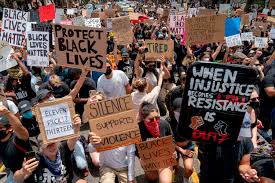Shots Fired: The Impact of Gun Violence in Schools on Student Mental Health
Totino Grace students and staff give their opinions
October 4, 2022
With the rise of gun violence in schools, more and more students are struggling with the mental health side effects of not knowing if they’re safe at school. In 2021, there were 42 school shootings, the most of any single year since 1999.
Even at Totino-Grace, a school physically unaffected by shootings, students fear the possibility of a shooting. One TG sophomore, who wished to remain anonymous, said that they think about the possibility of a shooting at TG “all the time.”
Even with the constant thoughts of a shooting on their mind, some TG students have little to no reaction to news of a shooting. “I’m not heartless, I just grew up that way,” says Totino-Grace freshman Niahm McMahon.
“I’m numb to it because it happens so often,” said an anonymous TG sophomore. “I don’t really feel anything beyond that until a little bit after.”
The feelings of these underclassmen are not uncommon. Researchers at the National Bureau of Economic Research collected data on anti-depressant prescriptions in areas surrounding schools that were victim to fatal shootings. Looking at the effects of 44 school shootings over the course of five years, they found that the prescription increase in youth anti-depressants within five miles of the affected school was 21.3% higher than prescription numbers 10-15 miles away.
In stark contrast to the feelings of depression in underclassmen, news of a shooting triggers feelings of anger in many juniors and seniors at Totino-Grace. One anonymous TG senior said, “It just makes me feel bad about this country and bad to be an American.”
“I was thinking about the fact that if [a shooting] happens at TG, we don’t have windows to get out of,” commented one Totino- Grace junior. “And lockdown procedures are kind of meaningless because most shooters are students and know the procedures.”
“The most common age of a school shooter is 17”, according to an updated 2018 study by Campus Safety Magazine, followed by 16 and 15-year-olds. With all of those ages falling within the high-school age range, it is no surprise that Totino-Grace students feel uneasy. The most common age for a school shooter is the age of their classmates, friends, and teammates.

“Safety is one of a person’s basic needs and when that need is not met, we see increases in mental illness,” said Totino-Grace school counselor Julie Jackson. “I think that gun violence is one of many societal factors that have negatively influenced youth mental health.”
With the decline of student mental health, some focus turns to how these issues are handled. “The most important parts of my job are to listen and help a student process experiences and emotions,” said Jackson.
With all the negative light surrounding school shootings, Totino-Grace,at the very least, is handling itself well.
“I have great friends and a great support system,” said a TG sophomore.
“I have not heard from students that they are more worried about gun violence lately,” commented Jackson.






